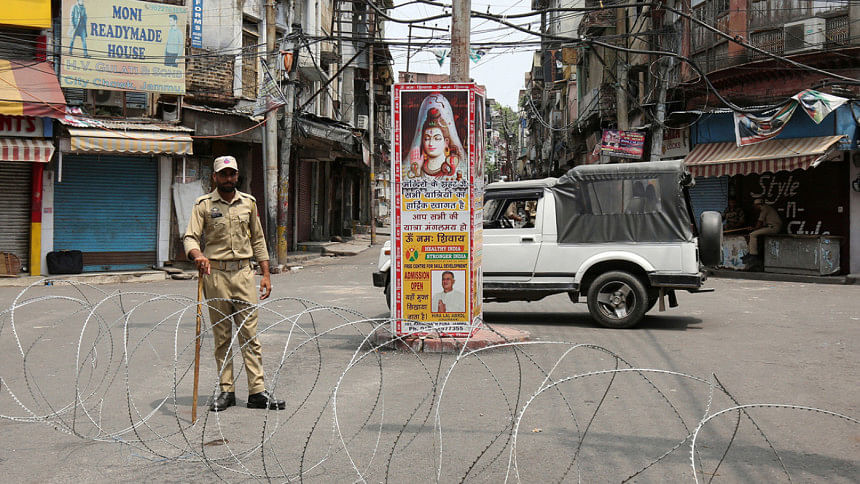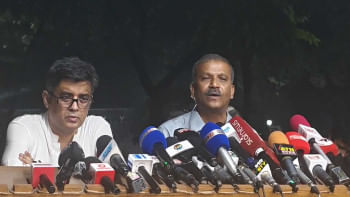Kashmir's history: India's revoking of special status in context

The Indian government on Monday revoked the special status of Kashmir in a bid to fully integrate its only Muslim-majority region with the rest of the country, the most far-reaching move on the troubled Himalayan territory in nearly seven decades.
Some political leaders in Kashmir warned in recent days that any such move by Prime Minister Narendra Modi's administration - through the repeal of the constitution's Article 370 - will trigger major unrest as it would amount to aggression against the region's people.
The authorities have launched a new clampdown in the state of Jammu and Kashmir by suspending telephone and internet services and putting some leaders under house arrest.
The decision will mean revocation of a bar on property purchases by people from outside the Indian state of Jammu and Kashmir and mean that state government jobs and some college places will no longer be reserved for state residents.
The Muslim-majority Himalayan region of Kashmir has been at the heart of more than 70 years of animosity, since the partition of the British colony of India into the separate countries of Muslim Pakistan and majority Hindu India.
The scenic mountain region is divided between India, which rules the populous Kashmir Valley and the Hindu-dominated region around Jammu city, Pakistan, which controls a wedge of territory in the west, and China, which holds a thinly populated high-altitude area in the north.
Here are some facts about the region and the constitutional change.
PARTITION
After partition of the subcontinent in 1947, Kashmir was expected to go to Pakistan, as other Muslim majority regions did. Its Hindu ruler wanted to stay independent but, faced with an invasion by Muslim tribesmen from Pakistan, acceded to India in October 1947 in return for help against the invaders.
ARTICLE 370
This provision of the Indian constitution which provided for Jammu & Kashmir's autonomy was drafted in 1947 by the then prime minister of the state, Sheikh Abdullah, and accepted by India's first prime minister Jawaharlal Nehru. It was, though, only classified as a temporary provision and in October 1949 was included in the Indian constitution by the constituent assembly.
ARTICLE 35A
This was added to the constitution in 1954 under Article 370, and empowers the Jammu & Kashmir state parliament to provide special rights and privileges to permanent residents of the state. It will die with the repeal of 370, which means that outsiders will likely be allowed to buy property in the region and state residents will likely lose their control of state government jobs and college places.
WARS
The dispute over the former princely state sparked the first two of three wars between India and Pakistan after independence 1947. They fought the second in 1965, and a third, largely over what become Bangladesh, in 1971.
DIVISIONS
A UN-monitored ceasefire line agreed in 1972, called the Line of Control (LOC), splits Kashmir into two areas - one administered by India, one by Pakistan. Their armies have for decades faced off over the LOC. In 1999, the two were involved in a battle along the LOC that some analysts called an undeclared war. Their forces exchanged regular gunfire over the LOC until a truce in late 2003, which has largely held since.
THE INSURGENCY
Many Muslims in Indian Kashmir have long resented what they see as heavy-handed New Delhi rule. In 1989, an insurgency by Muslim separatists began. Some fought to join Pakistan, some called for independence for Kashmir. India responded by pouring troops into the region. India also accused Pakistan of backing the separatists, in particular by arming and training fighters in its part of Kashmir and sending them into Indian Kashmir. Pakistan denies that, saying it only offers political support to the Kashmiri people.
INDIAN KASHMIR
Governed as the northernmost state of Jammu and Kashmir. It has two capitals, Jammu in winter (November-April), Srinagar in summer (May-October).
New Delhi claims the whole of Jammu and Kashmir as an integral part of India.
PAKISTANI KASHMIR
Consists of the smaller Azad Kashmir ("Free Kashmir") and the Northern Areas, which also formed part of the state before independence. Pakistan says a UN-mandated referendum should take place to settle the dispute over the region, expecting that the majority of Kashmiris would opt to join Pakistan.
GEOGRAPHY
Parts of Kashmir are strikingly beautiful with forest-clad mountains, rivers running through lush valleys and lakes ringed by willow trees. The western Himalayan region is bounded by Pakistan to the west, Afghanistan to the northwest, China to the northeast, and India to the south.
POPULATION AND AREA
Ten million in Indian Kashmir and more than three million in Pakistani Kashmir. About 70 percent are Muslims and the rest Hindus, Sikhs and Buddhists. With an area of 222,236 square km (85,783 sq miles), it is slightly bigger than the US state of Utah and almost as big as Britain.
ECONOMY
About 80 percent agriculture-based. Crops include rice, maize, apples and saffron. The area is also known for handicrafts such as carpets, woodcarving, woolens and silk. Tourism, once flourishing, has been badly hit by the conflict.

 For all latest news, follow The Daily Star's Google News channel.
For all latest news, follow The Daily Star's Google News channel. 



Comments